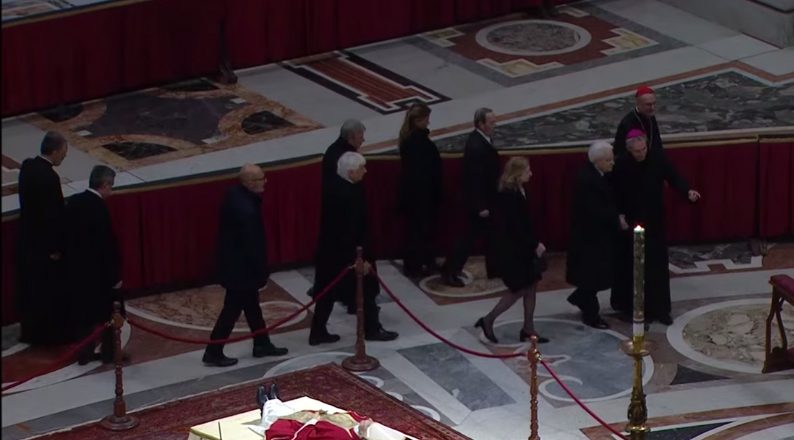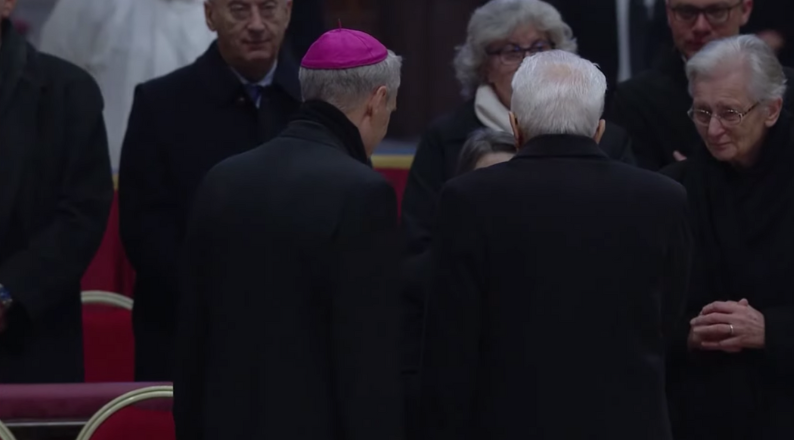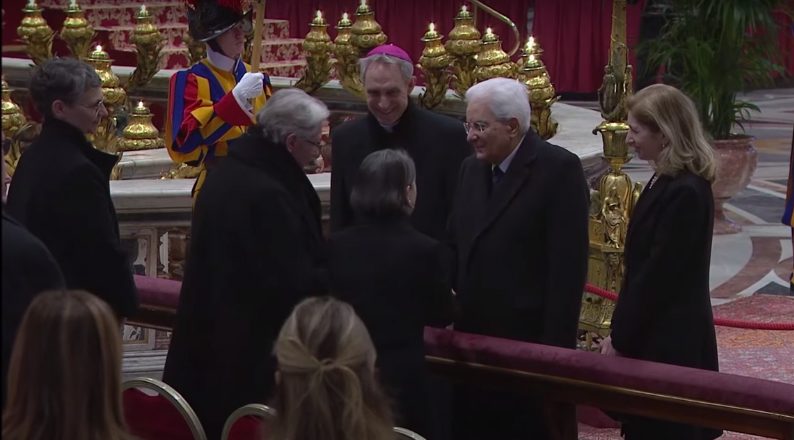(ZENIT News / Rome, 02.01.2023).- A Pope’s death poses questions that are formulated until he is missing. It’s Benedict XVI’s case. One of the questions is to whom should condolences be offered?
The exceptional event that, the Pope Emeritus having died, Pope Francis continues in office, stresses the need for a double type of condolences: those offered by political and religious authorities, and those that — inside the Church –, are offered by ecclesiastic representatives or lay leaders of Movements, Associations or Catholic Foundations.
International political and religious leaders offer condolences to Pope Francis. We have seen how they have done so through statements and press releases that, it’s understood, have been sent first to Pope Francis and then shared on the social networks.
However, inside the Church, the condolences are offered to the “Papal Family.” In fact, on Monday morning, January 2, the President of the Italian Government (who had already offered the Holy Father diplomatic condolences, came to offer his condolences to the “Papal Family (this 04.02 to 04.47 minute video can be watched).

What is the Pontifical Family?
The “Pontifical Family” is a nucleus of individuals inside a larger reality known as the “Papal Household.” The “Papal Household” is an entity that up to the time of Paul VI was known as the “Papal Court.” Although the name changed the meaning did not change. It is a set of people that are part of the Pope’s more intimate environment: those with whom he lives closer.
Within the nucleus of the “Papal Household,” the “Papal Family” is the Pontiff’s more intimate environment. It’s divided in two: the ecclesiastical part and the lay part. In brief, we can say that the “Papal Family” embraces the Pope’s domestic care (meals, rooms, clothes, etc.) and accompaniment in civil and religious public ceremonies in which the Holy Father takes part, as well as the organization of his agenda and participation in events and audiences.
The ecclesiastical part of the “Papal Family” includes the Substitute for General Affairs of the Secretariat of State, the Secretary for Relations with States, the Pope’s Almoner; the President of the Pontifical Ecclesiastical Academy, the Papal Household’s Theologian, papal ceremonies, His Holiness’ chaplains, the Papal Household preacher, the Pope’s personal secretary and the supernumerary apostolic prothonotaries.
The lay part is made up of the Commander of the Swiss Guard, the President of the Pontifical Academy of Sciences, His Holiness’ gentlemen, the Pope’s butler, the Pope’s carnal relatives and the Pontifical Anti-Chamber.
Given the number of individuals to organize, the Pope appoints a Prefect of the Papal Household, who is helped by a Regent.

Benedict XVI’s “Papal Family”
As Benedict XVI was no longer an acting Pope, the “Papal Family” was considerably reduced to seven people: the four consecrated virgins: Rosella, Cristina, Loredana and Carmela; Sister Birgit Wansing, his personal secretary; and Archbishop Georg Gänswein, his private secretary, whom Pope Francis has also appointed Prefect of the Papal Household. Monsignor Georg Ratzinger, the Pope Emeritus’ brother, was also part of the Family until his death in 2020.
This was the reason why, on the morning of January 2, it was Monsignor Gänswein who received the condolences of those who went personally to Saint Peter’s Basilica, where Pope Benedict XVI was lying in state.



